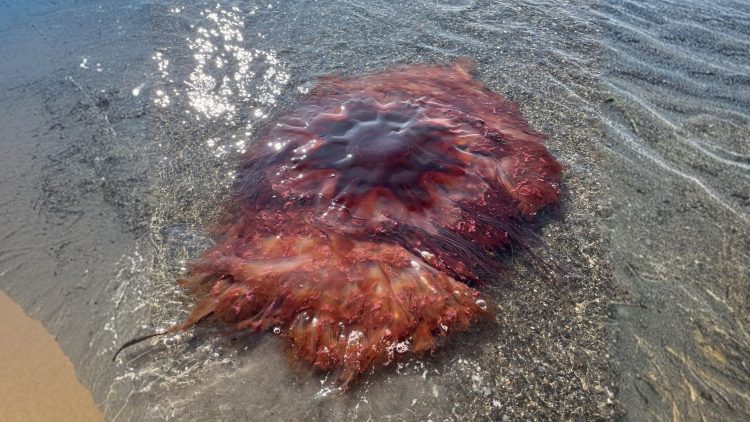Locals and tourists got a heads-up recently about a giant jellyfish showing up at a popular beach spot.
Anyone who’s been stung by one knows it’s a pain you really don’t want to go through again.
Officials in South Portland, Maine, are asking folks to be careful after a massive jellyfish was spotted along the coast there.
Officials want the public to stay alert and safe
The city shared on Facebook: “Spotted this weekend at Willard Beach: A nearly 5-foot wide lion’s mane jellyfish!
“If you see one, here’s what to do: Don’t touch it! They sting; Observe it. They’re so interesting to watch, and pretty too; If you see one washed up at Willard Beach, notify a lifeguard and they will help it back into the water with a shovel.”
Pretty clear advice. Look, don’t touch, and let the pros handle it.
This species is one of the longest in the ocean
These jellyfish aren’t just big. They’re crazy long. Some can stretch out to around 120 feet.
To put that in perspective, that’s about four-fifths the height of the Statue of Liberty. Not the whole structure, just Lady Liberty herself.
They’re not heavier than blue whales or anything, but their tentacles make them way longer.
Jellyfish stings are extremely painful
Getting stung by a jellyfish? Not fun. The writer recalls getting hit by one as a kid, and it was brutal.
It was a small one, but still, the tentacles stuck to their arm and hurt like hell. Their dad, trying to help, even suggested peeing on the sting. That idea didn’t go over too well.
Looking back, if that sting had come from a lion’s mane jellyfish, they might’ve said yes to the bathroom remedy.
Lion’s mane jellyfish can cause serious medical reactions
These things aren’t just big and scary-looking. The Wildlife Trust says they can give a pretty nasty sting too.
If the sting leaves big welts or swelling, it’s best to go see a doctor.
This isn’t the first time they have appeared in Maine
Sightings like this aren’t totally new in the area. A scientist named Nicholas Record has actually been keeping track of them since 2014.
He’s based out of the Bigelow Lab for Ocean Sciences over in East Boothbay, and he’s seen these guys showing up more and more over the years.
Experts have tracked an increase in sightings
In an interview with weather.com back in 2019, Record said most of the jellyfish sightings they’ve logged have been lion’s mane.
“In a typical year, the biggest ones that people would report are typically the size of a dinner plate, and this year, I’ve gotten several reports of some that are two feet and a couple that are five feet across,” Record said.
Their growing presence could be tied to environmental shifts
“They’re generally a sub-Arctic species and they’re not new to the Gulf of Maine by any means. But the size and just the fact that they’re all we’re seeing this year is what makes it unique.”
So yeah, they’ve been around. But now they’re bigger. And a lot more noticeable.
















































